



These 15 women in science are presented in alphabetical order. Some have won Nobel Prizes while some have contributed to prizes won by others, yet were denied adequate recognition. They have, however, won many other prestigious awards for their work. Their birthdates range from 1867 to 1943. Detailed information for each can be found at the Nobel e-Museum. |

|
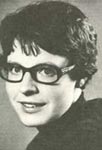
|
Jocelyn Bell Burnell, July 15, 1943-- • Astronomer and Physicist. |
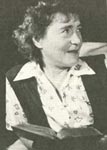
|
Gerty Radnitz Cori, Aug. 15, 1896 - Oct. 26, 1957 • Biochemist, Nobel Prize in Physiolgy or Medicine 1947. |

|
Marie Sklodowska Curie, Nov. 7, 1867 - July 4, 1934 • Physicist and Radiochemist, Nobel Prize in Physics 1903 and in Chemistry 1911. |

|
Gertrude Belle Elion, Jan. 23, 1918 - Feb. 21, 1999 • Biochemist, Nobel Prize in Physiology or Medicine 1988. |

|
Rosalind Elsie Franklin, July 25, 1920 - April 16, 1958 • Physical Chemist. |
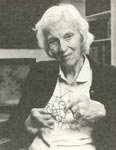
|
Dorothy Crowfoot Hodgkin, May 12, 1910 - July 19, 1994 • Physical Chemist, Nobel Prize in Chemistry 1964. |
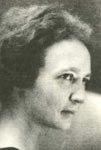
|
Irene Joliot-Curie, Sept. 12, 1897 - March 17, 1956 • Radiochemist, Nobel Prize in Chemistry 1935. |

|
Rita Levi-Montalcini, April 22, 1909-- • Neuroembryologist, Nobel Prize in Physiology or Medicine 1986. |

|
Maria Goeppert Mayer, June 28, 1906 - Feb. 20, 1972 • Mathematical Physicist, Nobel Prize in Physics 1963. |
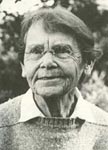
|
Barbara McClintock, June 16, 1902 - Sept. 2, 1992 • Geneticist, Nobel Prize in Physiology or Medicine 1983. |
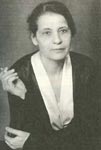
|
Lise Meitner, Nov. 7, 1878 - Oct. 27, 1968 • Nuclear Physicist. |

|
Emmy Noether, March 23, 1882 - April 14, 1935 • Mathematician. |

|
Christiane Nusslein-Volhard, Oct. 20, 1942-- • Developmental Biologist, Nobel Prize in Physiology or Medicine 1995. |

|
Chien-Shiung Wu, May 31, 1912 - Feb. 16, 1997 • Experimental Nuclear Physicist. |
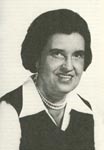
|
Rosalyn Sussman Yalow, July 19, 1921-- • Medical Physicist, Nobel Prize in Physiology or Medicine 1977. |